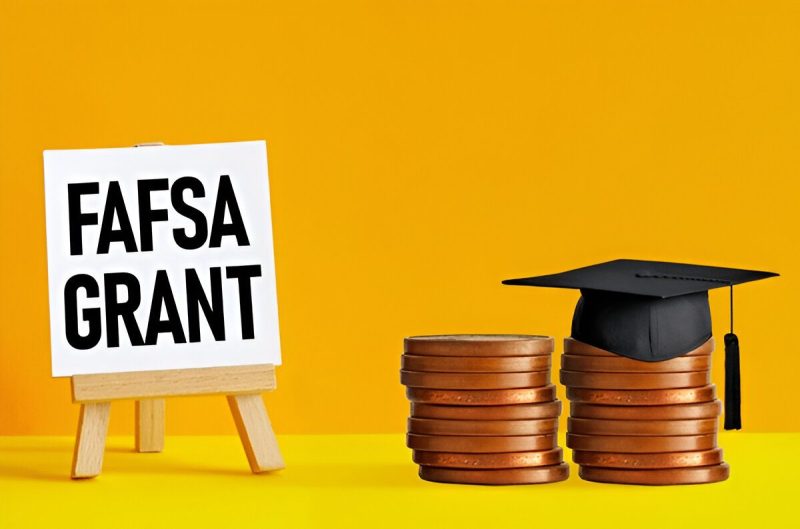Consider this: you want to enhance your education, but the cost of tuition is like climbing a mountain without equipment. That is where Pell Grants enter the picture. The federal government of the United States provides financial help in the form of Pell Grants.
Unlike loans, this form of support does not compel you to repay the money; it is more of a helping hand to guarantee you can focus on studying without worrying about payback.
These awards, named after Senator Claiborne Pell, aim to help low-income students pursue higher education without incurring significant debt.
The beauty of Pell Grants is in their simplicity. They are intended for students pursuing undergraduate degrees, but certain post-baccalaureate programs may also qualify. If your eligibility is confirmed, the grant money is paid directly to your school, covering tuition, lodging, books, and other relevant expenses. Essentially, it’s like having a financial partner support your educational goals, which is a bargain anyone would want to make, right?
Why Were Pell Grants Created?

The Pell Grants tale begins with a great goal in mind. They were introduced to address educational inequalities. For years, many outstanding individuals were unable to afford further education due to financial restraints, causing their aspirations to perish before they even had the opportunity to bloom.
That’s when the concept for Pell Grants was born: to level the playing field and provide everyone, regardless of background, the opportunity to succeed.
These funds were established to bridge the gap for students from low-income households, removing restrictions that had previously confined education to a select few. Education is a tremendous instrument for altering people’s lives, and Pell Grants have removed financial barriers, opening doors not only to classrooms but also to brighter futures.
Who Can Apply for Pell Grants?
Now you may be asking, “Can I apply for a Pell Grant?” The good news is that if you’re a U.S. citizen or qualified non-citizen pursuing your first college degree, you may be eligible.
To be considered, complete the Free Application for Federal Student Aid (FAFSA). The FAFSA calculates your financial need based on criteria such as:
- Family income
- Tuition costs
- Family size
The funds are designed to assist people who require it the most. Students from low-income families are often preferred, although other characteristics, such as full-time or part-time enrollment, can play a role. Everyone’s position is unique, but the goal is clear: to guarantee that people may afford school without drowning in debt.
How Do Pell Grants Work?
The Application Process
Completing the FAFSA Form
Applying for a Pell Grant begins with one critical step: completing the Free Application for Federal Student Aid (FAFSA). Think of the FAFSA as your passport to government financial help. This form collects information about your financial condition, such as family income and assets, in order to assess your eligibility.
The FAFSA form may be done online or on paper, but most individuals prefer the online option since it is faster and includes helpful instructions. After you submit it, the ball is in their court. They will compute your Expected Family Contribution (EFC) and distribute the results to the schools you specified on your application.
Gathering Required Documents
Before you begin filling out the FAFSA, ensure that you have all of your documentation in order. You will require:
- Your Social Security number
- Tax returns
- Proof of income
- Bank statements
If you are classified as a dependent student, your parents’ details will also be required.
The Pell Grants Eligibility
Financial Needs Assessment
Pell Grant eligibility is based on:
- Your Expected Family Contribution (EFC)
- The Cost of Attendance (COA) at your chosen institution
- Whether you will be a full-time or part-time student
The smaller your EFC, the better your chances of receiving a Pell Grant. Schools use this amount, together with their COA, to calculate how much funding you are entitled to.
Other Eligibility Criteria
To be eligible for Pell Grants, you must also:
- Be a U.S. citizen or an eligible non-citizen
- Be enrolled in an undergraduate program at a participating institution
- Maintain good academic progress throughout your study
Advantages of Pell Grants
No Strings Attached (Non-Repayment)
One of the most appealing characteristics of Pell Grants is that they are like a gift that you do not have to repay.
Consider it as the government investing in your education because they believe in your ability to achieve.
However, some circumstances may require repayment, such as dropping out of school or altering your enrollment status.
Accessibility for Low-Income Families
Pell Grants are lifelines for students from low-income families. This award program guarantees that students from financially disadvantaged households are not left behind just because of their money.
Education is a strong weapon, and by offering this financial assistance, future generations may break free from the cycle of poverty.
Coverage for Educational Expenses
Pell Grants can cover a variety of expenses, including:
- Tuition
- Textbooks
- Laptops
- Lodging
- Transportation
Do You Have To Pay Back Pell Grants

Situations Where Repayment is Required
Certain scenarios may result in payback requirements, such as:
- Withdrawing from school before the end of a semester
- Changing your enrollment status from full-time to part-time
- Receiving the Pell Grant under false pretenses
How to Avoid Repayment Issues
To avoid repayment issues:
- Stay enrolled and attend your classes
- Inform your school’s financial aid office before making changes to your enrollment status
- Ensure your FAFSA application is accurate and up to date
How to Maximize Your Pell Grant Benefits
Budgeting Your Grant Funds
To get the most out of your Pell Grant:
- Prioritize tuition and fees.
- Allocate funds for textbooks, supplies, and equipment.
- Use a budgeting tool to track your expenses.
Combining Pell Grants and Other Financial Aid
Pell Grants can be combined with:
- Scholarships
- Work-study programs
- Other financial aid
Final Thoughts
Pell Grants are more than just financial lifelines; they provide opportunities for countless individuals to pursue their academic goals without the burden of heavy debt. Staying informed and proactive is essential for maximizing the rewards.
FAQs Regarding Pell Grants
What is the Pell Grant?
A Pell Grant is a type of financial aid provided by the U.S. federal government to low-income students attending college or university.
Who qualifies for the Pell Grant?
Eligibility is determined by financial need, as reported on the FAFSA form.
How do I apply for the Pell Grant?
Complete the FAFSA form and submit it with accurate financial documentation.
Do You Have To Pay Back Pell Grants?
Generally, no. However, repayment may be required in certain circumstances.
Can I lose my Pell Grant?
Yes, if you fail to maintain academic progress or change your enrollment status.
How much money can I receive with a Pell Grant?
The maximum reward for the academic year 2023-2024 is $7,395.
Can Pell Grants be paired with other financial aid?
Absolutely! They can be combined with scholarships, work-study programs, and more.







